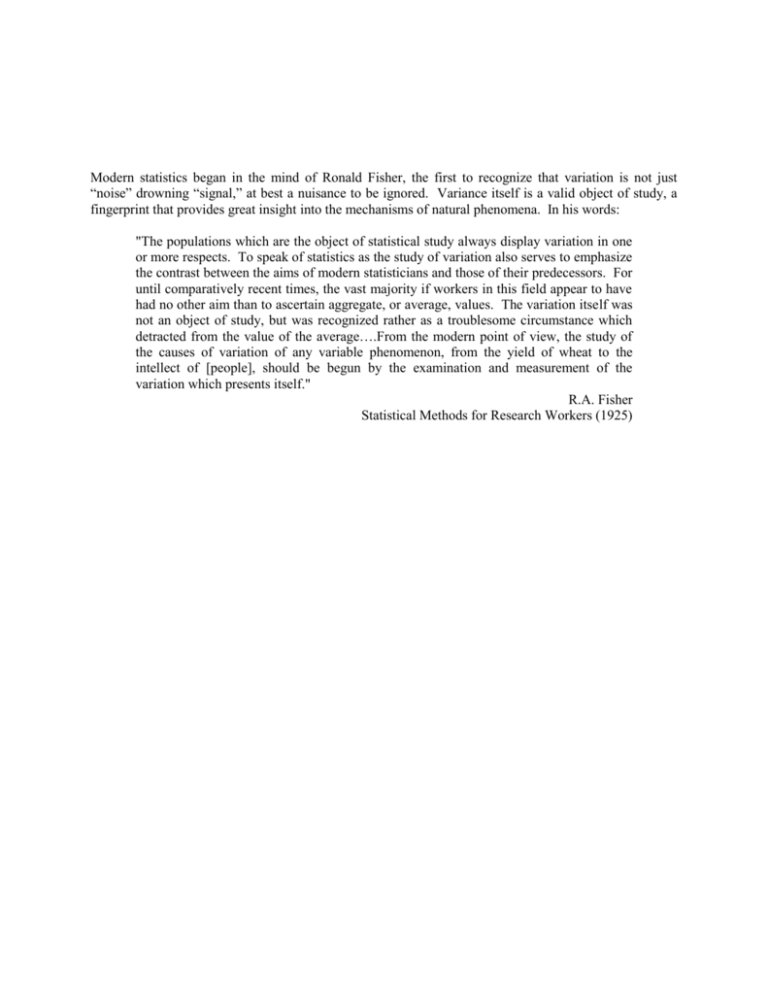"The populations which are the object of statistical
advertisement

Modern statistics began in the mind of Ronald Fisher, the first to recognize that variation is not just “noise” drowning “signal,” at best a nuisance to be ignored. Variance itself is a valid object of study, a fingerprint that provides great insight into the mechanisms of natural phenomena. In his words: "The populations which are the object of statistical study always display variation in one or more respects. To speak of statistics as the study of variation also serves to emphasize the contrast between the aims of modern statisticians and those of their predecessors. For until comparatively recent times, the vast majority if workers in this field appear to have had no other aim than to ascertain aggregate, or average, values. The variation itself was not an object of study, but was recognized rather as a troublesome circumstance which detracted from the value of the average….From the modern point of view, the study of the causes of variation of any variable phenomenon, from the yield of wheat to the intellect of [people], should be begun by the examination and measurement of the variation which presents itself." R.A. Fisher Statistical Methods for Research Workers (1925)











